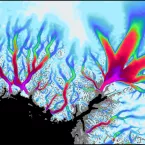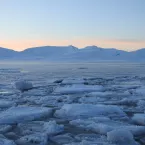A vast area of the Arctic Ocean remains ice free as November begins, far later in the season than is typical. The monthly average ice extent for October is the lowest in the satellite record.
Our Research
Related News & Stories

Following the sea ice extent minimum on September 15, 2020, expansion of the ice edge has been most notable in the northern Chukchi and Beaufort Seas. The ice edge along the Laptev Sea continued to retreat farther.
The Exchange for Local Knowledge and Observations in the Arctic (ELOKA) has formed an Advisory Committee, consisting of four members who will advise ELOKA during its five-year grant period that began in 2021.
On September 15, Arctic sea ice likely reached its annual minimum extent of 3.74 million square kilometers (1.44 million square miles).

Arctic sea ice has likely reached its minimum extent for the year, at 3.74 million square kilometers (1.44 million square miles) on September 15, 2020, according to scientists at the National Snow and Ice Data Center (NSIDC) at the Unive